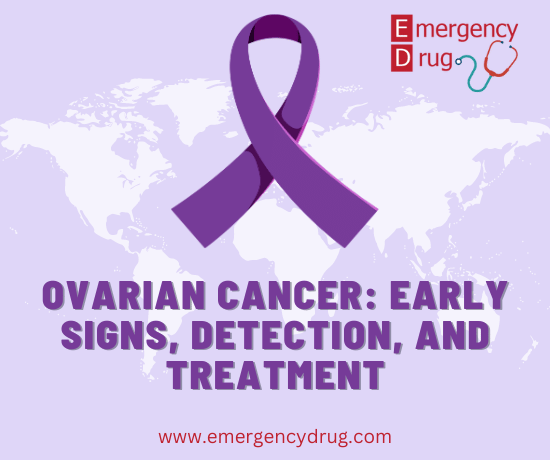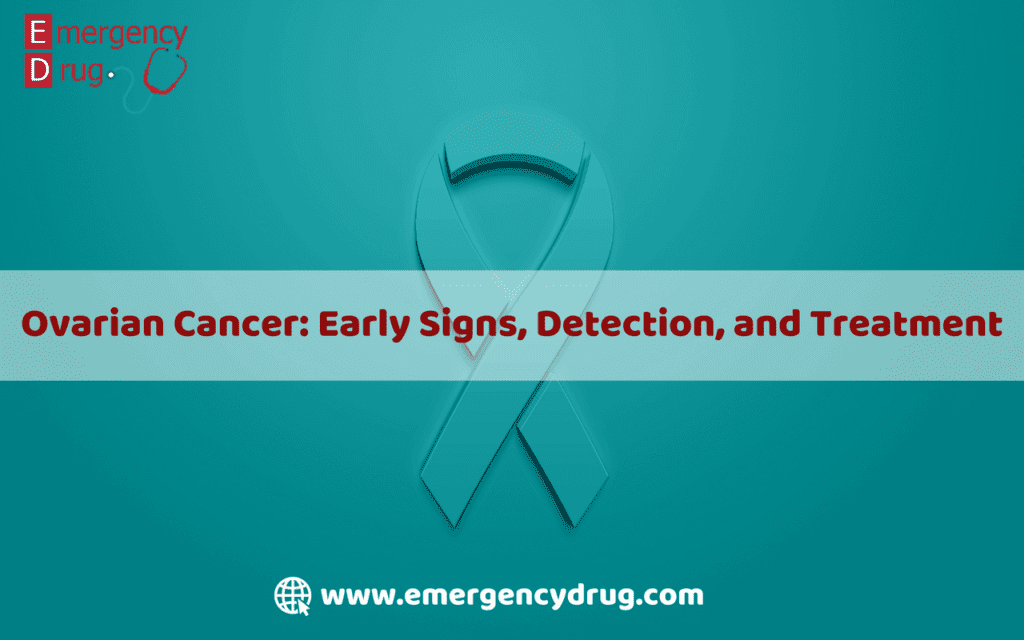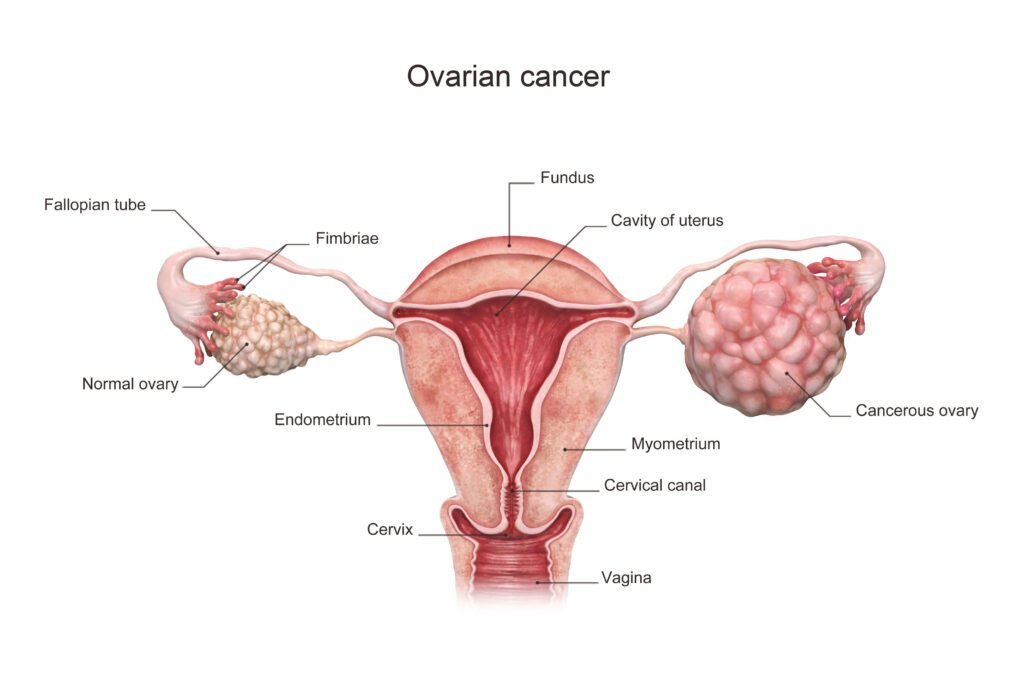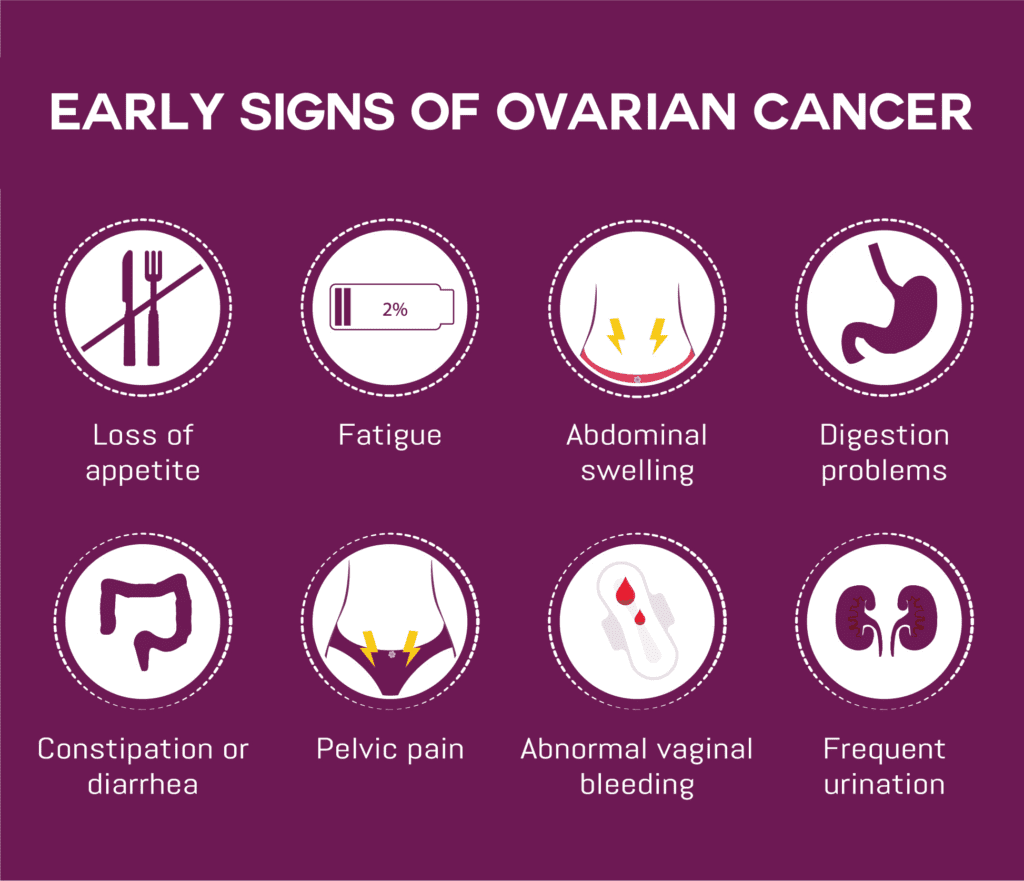Ovarian Cancer: Early Signs, Detection, and Treatment
Hasan
21 Dec, 2022


Ovarian cancer is a type of cancer that starts in the reproductive organs, specifically the ovaries. It can be life-threatening and has few symptoms, meaning it is often only discovered when it has already spread to other body parts. This article will explain everything you need to know about early detection and treatment methods for ovarian cancer.
Table of Contents
What are the Ovaries?
Ovaries are female reproductive glands. The ovaries produce eggs for reproduction. Fertilized eggs travel from the ovaries through the fallopian tubes into the uterus, where they develop into a fetus. In addition to estrogen and progesterone, the ovaries produce other female hormones. The uterus has one ovary on each side.

There are three main types of cells in the ovaries. Each type of cell can develop into a different kind of tumor:
- Epithelial tumors begin in the outer layer of the ovary. A majority of ovarian tumors are epithelial cell tumors.
- The cells that produce eggs are the source of germ cell tumors.
- The ovary produces estrogen and progesterone through stromal cells that hold the ovary together.
Some benign tumors never spread beyond the ovary. Malignant or borderline ovarian tumors can spread to other parts of the body and be fatal.
What is Ovarian Cancer?
Ovarian cancer is a neoplastic tumor that develops from the ovary. It can spread to other organs in the abdomen, such as the fallopian tube, uterus, and bladder. This cancer is often seen in women of reproductive age and can cause infertility or death if not detected early.

Types of ovarian cancer
There are three types of ovarian cancer: epithelial, germ cell, and stromal. These are the three main types of cells that make up the ovary. Tumors can develop from different types of cells, and each type differs in its spread, treatment, and prognosis. Generally, we refer to high-grade serous ovarian cancer (HGSOC) as “ovarian cancer.”
- Epithelial ovarian cancer: Epithelial ovarian cancer is the most common type of ovarian cancer. Primary peritoneal and fallopian tube cancer are similar to epithelial ovarian cancer and are treated similarly.
- Germ Cell ovarian cancer: Germ cell ovarian tumors are rare and usually affect girls and young women up to their early 30s. Ovarian teratoma is the most common type.
- Stromal cell ovarian cancer: Sex cord-stromal ovarian tumors can be non-cancerous (benign) or cancerous (malignant). Granulosa cell tumors are the most common type.
- Small cell carcinoma (SCCO): It is a sporadic ovarian cancer. It is not sure whether the cells in SCCO are from ovarian epithelial cells, sex-cord stromal cells, or germ cells.
Causes of Ovarian Cancer
Ovarian cancer is the most lethal cancer in women, causing more deaths than any other gynecologic tumor. It can also be successfully treated if it is discovered early. Some factors that can increase your risk of ovarian cancer include:
- Women over 50 have a higher risk (risk increases with age).
- Family history of ovarian or breast cancer
- Early onset of periods (before 12 years) and late menopause
- Those who have never had children or who had their first child after 35 years of age
- Using estrogen-only hormone replacement therapy or fertility treatment.
Breastfeeding, using the oral contraceptive pill for several years, and having your fallopian tubes tied (or removed) may reduce your risk of developing ovarian cancer.
Early Signs of Ovarian Cancer
Ovarian cancer is a severe cause of concern. The symptoms can be difficult to distinguish from other health issues. They often don’t arise until cancer has already spread and is harder to treat.

It is different from other cancers because it doesn’t show symptoms until the disease has progressed and spread. Early signs to watch for are unusual changes in your period, pelvic pain, and a new mass or change in the size of an existing one. These symptoms of ovarian cancer can develop at any stage of the condition. They include:
- Pelvic or abdominal pain or cramping
- Difficulty breathing
- Feeling full quickly after starting to eat or lack of appetite
- Indigestion or upset stomach
- Nausea
- Weight loss
- Feeling like you have to urinate more frequently or urgently than normal
- Unexplained exhaustion
- Bloating or constipation
- Increase abdominal girth or abdominal swelling
- Pain while having sex.
If you notice any changes, talk to your doctor about how to change your lifestyle to prevent ovarian cancer.
Detection and Diagnosis
You will be advised to undergo tests and exams if your doctor finds anything suspicious during a pelvic examination or if you have symptoms that may indicate ovarian cancer.
Imaging tests: Doctors use imaging tests to take pictures of the inside of your body. Imaging tests can show whether a pelvic mass is present, but they cannot confirm that the group is cancer.
Ultrasonography: Ultrasonography or Ultrasound uses sound waves to create an image on a video screen. A small probe is placed into a woman’s vagina, and a tiny microphone-like instrument called a transducer receives the echoes that bounce off the organs. And a computer turns these echoes into images.
CT scans: CT (Computed Tomography) scans make detailed cross-sectional images of your body. It can detect ovarian cancer spread to other organs.
MRI scans: MRI (Magnetic resonance imaging) scans produce cross-sectional images. MRI uses powerful magnets to make images. For better detail, gadolinium is injected before the scan.
Laparoscopy: During this procedure, the doctor looks at the ovaries and other organs and tissues in the pelvic area through a thin, lit tube. Laparoscopy gives doctors a look at the organs, which can help them plan surgery or other treatments.
Biopsy: If a suspicious growth is removed in its entirety and sent to a lab for analysis, only then can a diagnosis of cancer be made. Biopsies are the term for this kind of surgery. Ovarian cancer biopsies often include surgical removal of the tumor.Ovarian cancer should be treated with anti-estrogen therapy, chemotherapy, and surgery. The five-year survival rate for ovarian cancer is only one in four, but the five-year survival rate for women is 88%.Visit our blog to read more articles.
Treatment for Ovarian Cancer
Doctors use many ways to treat cancer, and researchers are exploring many more, such as surgery and radiation therapy. They use these treatments to target a specific tumor or area of the body. Drug treatments like chemotherapy, immunotherapy, or targeted therapy, which can affect the whole body, are often called “systemic” treatments. Here, you can find out the most common ways to treat cancer –
Surgery:
Surgery is one diagnostic method for cancer. In most circumstances, the only method to determine whether a person has cancer and what kind it is is by removing a tiny sample of tissue and analyzing it. The diagnosis is achieved by examining cells from the model under a microscope or by doing further laboratory tests.
Chemotherapy:
Chemotherapy (Chemo) is considered a systemic treatment since the medications can reach and destroy cancer cells that have metastasized to distant locations from the source tumor. This distinguishes it from other forms of treatment, such as surgery or radiation. When cancer is detected, a tumor must be removed surgically, and radiation therapy must be focused on a precise area of the body to kill or harm cancer cells. These treatments are known as “local” since they target a specific body region.
Radiation Therapy:
Radiation therapy kills or damages cancer cells by using high-energy particles or waves, like x-rays, gamma rays, electron beams, or protons. Usually, your cells grow and divide to make new ones. But cancer cells grow and divide faster than most normal cells do. Radiation works by breaking up the DNA inside of cells in small ways. These breaks stop cancer cells from multiplying and growing, which makes them die. Radiation can also hurt normal cells that are close by, but most of them recover and go back to working as they should.
Targeted Therapy:
Targeted therapy is a way to treat cancer that uses drugs or other substances to find and kill only certain kinds of cancer cells. It can be used alone or with other treatments like standard chemotherapy, surgery, or radiation therapy. If targeted therapy is part of your treatment plan, knowing how it works and what to expect can help you get ready for treatment and make decisions about your best care.
Stem Cell or Bone Marrow Transplant:
Some types of cancer can be treated with a stem cell transplant, which is also called a bone marrow transplant. Depending on where the stem cells come from, this procedure could be called a peripheral stem cell transplant or a cord blood transplant. Here, we’ll talk about stem cells and how stem cell transplants work. We’ll also talk about some of the problems with transplants and what it’s like to donate stem cells.
Hormone Therapy:
Hormone therapy is a systemic treatment because the hormones it aims to change are found all over the body. In hormone therapy, the drugs go all over the body to find and target the hormones. This makes it different from most surgery and radiation therapy types, which only affect one body part at a time. These are called “local treatments” because they only affect one body part.
How to Reduce Ovarian Cancer Risk?
- By maintaining a healthy diet and regular exercise, the risk is reduced. A daily routine of 30 minutes can reduce your risk by as much as 20%. In addition to an active lifestyle, including specific foods in your diet can minimize your risk.
- Oral contraceptives can reduce risk by 50%. More extended use reduces risk. Oral contraceptives aren’t suitable for everyone, so visit your doctor.
- Women who have given birth to at least one child, mainly before 30, have a reduced risk of having ovarian cancer. Each kid, a woman bears, reduces this risk. Additionally, breastfeeding mothers had a reduced risk of having ovarian cancer.
- Avoiding tobacco use and exposure can reduce the risk of ovarian cancer and numerous other types of cancer. Also recommended is limiting your alcohol usage to three drinks each week. Ovarian cancer risk can be reduced by avoiding tobacco, limiting alcohol intake, and following the advice above to exercise daily and maintain a healthy diet.
Final Thoughts
Ovarian cancer is one of the most lethal forms of gynecologic cancer; yet, it is also known as the “silent killer” because its symptoms are sometimes confused with other diseases affecting women. As a result, most instances are not detected until it is too late when the disease has already progressed to an advanced state. It is essential, for this reason, to raise people’s consciousness regarding ovarian cancer and the need for early detection.
